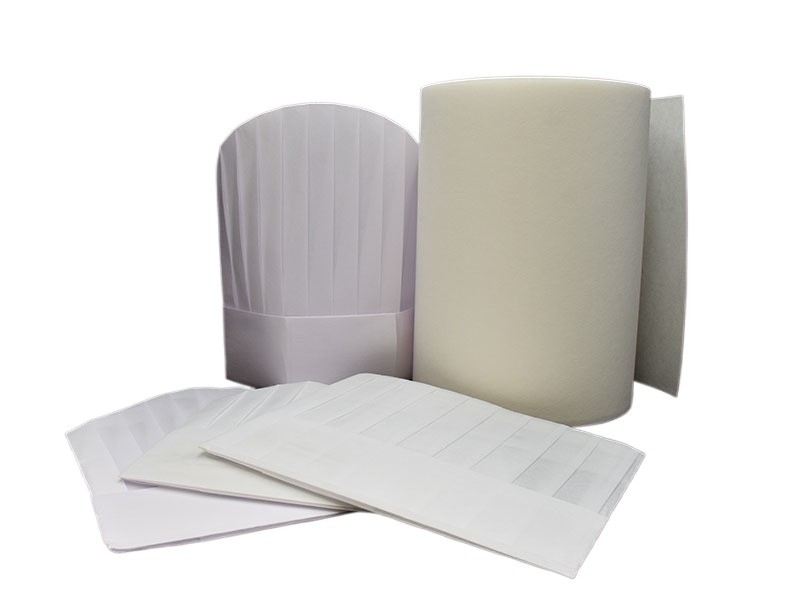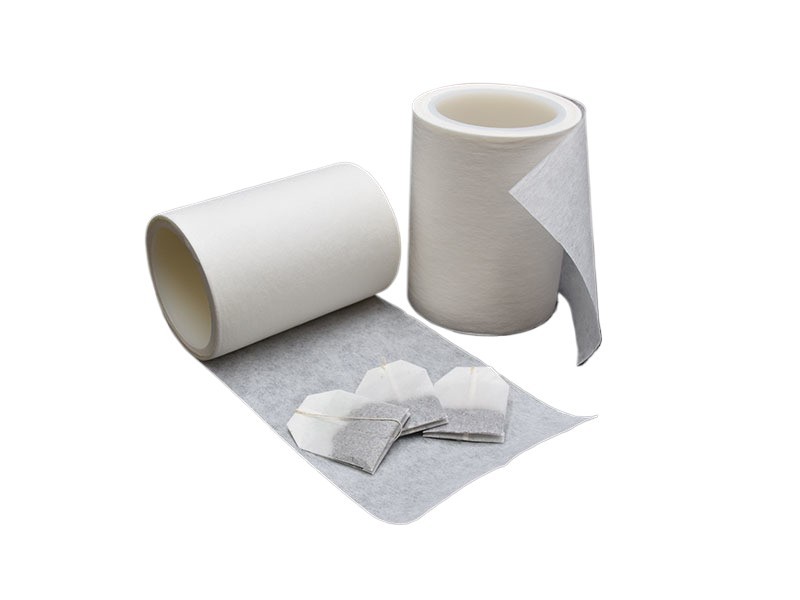Heat Seal Nonwoven Backing: Elevate Your Embroidery Skills
Release time:
2025-04-24
Heat Seal Nonwoven Backing: Elevate Your Embroidery Skills
Embroidery is more than just a craft; it is an art form that rewards precision and creativity. As we delve into the world of **heat seal nonwoven backing**, you will discover how this essential material can significantly enhance your embroidery skills. From providing stability to ensuring perfect stitch quality, understanding the nuances of heat seal nonwoven backing can elevate your projects beyond the ordinary.
Table of Contents
- What is Heat Seal Nonwoven Backing?
- Benefits of Using Heat Seal Nonwoven Backing
- Types of Heat Seal Nonwoven Backing
- How to Choose the Right Nonwoven Backing for Your Project
- Application Techniques for Heat Seal Nonwoven Backing
- Tips for Maximizing Your Embroidery Quality
- Common Mistakes to Avoid When Using Nonwoven Backing
- Frequently Asked Questions
- Conclusion
What is Heat Seal Nonwoven Backing?
Heat seal nonwoven backing is a specialized fabric made from synthetic fibers that are bonded together using heat and pressure. This backing is designed specifically for embroidery applications, providing a sturdy foundation that enhances the overall quality of the final product. Unlike traditional woven backings, nonwoven options offer a lightweight and flexible alternative that maintains its integrity throughout the stitching process.
Understanding the Composition
The fibers in heat seal nonwoven backings are typically made from polyester or polypropylene, ensuring durability and resistance to fraying. The unique nonwoven construction allows for excellent breathability, making it ideal for various types of fabrics, including knits and wovens.
Benefits of Using Heat Seal Nonwoven Backing
Utilizing heat seal nonwoven backing can bring a multitude of advantages to your embroidery projects. Here are some key benefits:
1. Enhanced Stability
One of the primary benefits of heat seal nonwoven backing is its ability to provide stability during the embroidery process. This backing prevents fabric distortion, ensuring that your design maintains its intended shape and appearance.
2. Improved Stitch Quality
The smooth surface of heat seal nonwoven backing aids in achieving clean and precise stitches. This material minimizes the risk of thread breakage and puckering, contributing to a polished final look.
3. Easy to Use
Heat seal nonwoven backing is user-friendly, requiring minimal adjustments during the embroidery process. Simply heat it with an iron or a heat press, and it will adhere securely to your fabric, allowing for hassle-free embroidery.
4. Versatility Across Fabrics
This backing works exceptionally well with a variety of materials, including cotton, polyester, and blends. It is suitable for both machine and hand embroidery, making it a versatile choice for different projects.
Types of Heat Seal Nonwoven Backing
Understanding the different types of heat seal nonwoven backings can help you select the most suitable option for your embroidery needs. Here are the most common types:
1. Cutaway Backing
Cutaway backing is a popular choice for dense or heavy designs. It provides superior stability and is cut away from the design after stitching, leaving a clean finish.
2. Tearaway Backing
As the name suggests, tearaway backing is easily removed after the embroidery process. It is best suited for lighter designs and is a favorite among hobbyists seeking simplicity.
3. Adhesive Backing
Adhesive backing features a sticky surface that adheres directly to the fabric. This type is advantageous for holding fabric in place during the embroidery process, eliminating the need for additional hooping.
How to Choose the Right Nonwoven Backing for Your Project
Selecting the right heat seal nonwoven backing is crucial for achieving the best results in your embroidery projects. Here are some considerations to guide your choice:
1. Fabric Type
Consider the type of fabric you will be using. Lighter fabrics may benefit from tearaway backing, while heavier fabrics may require cutaway options for added stability.
2. Stitch Density
The density of your embroidery design is another vital factor. For intricate and dense designs, opt for cutaway backing. For simpler designs, tearaway backing will suffice.
3. Project Purpose
Think about the purpose of your embroidery project. If it is for a garment that will undergo frequent washing, cutaway backing may provide the durability you need.
Application Techniques for Heat Seal Nonwoven Backing
Correct application of heat seal nonwoven backing is essential for optimal results. Follow these techniques to ensure a successful embroidery experience:
1. Prepare Your Fabric
Before applying the backing, pre-wash and iron your fabric to eliminate any wrinkles or contaminants that could affect adherence.
2. Cut the Backing to Size
Cut the nonwoven backing slightly larger than your embroidery design to ensure complete coverage. This will help maintain stability during stitching.
3. Heat Application
Using an iron or heat press, apply even pressure and heat to the backing for the recommended time. Be sure to follow the manufacturer's instructions for the best results.
Tips for Maximizing Your Embroidery Quality
To further enhance your embroidery projects, consider the following tips:
1. Test on Scraps
Always test your chosen backing and fabric combination on a scrap piece before starting your main project. This will help you identify any potential issues.
2. Use Quality Threads
High-quality embroidery threads can make a significant difference in the final appearance of your design. Invest in reputable brands to achieve the best results.
3. Adjust Tension Settings
Ensure that your machine's tension settings are adjusted according to the type of backing and thread you are using. This will minimize the risk of thread breakage and ensure even stitching.
Common Mistakes to Avoid When Using Nonwoven Backing
Avoiding common pitfalls can help you achieve better results in your embroidery projects:
1. Neglecting Fabric Compatibility
Using nonwoven backing that is not compatible with your fabric can lead to undesirable results. Always verify compatibility before starting.
2. Overheating the Backing
Excessive heat can damage nonwoven backing. Be cautious and follow the recommended temperature guidelines to preserve its integrity.
3. Skipping the Pre-Wash
Failing to pre-wash your fabric can lead to shrinkage after embroidery, causing distortions. Always pre-wash to ensure a successful project.
Frequently Asked Questions
1. Can I use heat seal nonwoven backing for all fabrics?
While heat seal nonwoven backing works well with most fabrics, it's essential to choose the right type based on the fabric's weight and the design's stitch density.
2. How do I know when to use cutaway versus tearaway backing?
Use cutaway backing for dense designs that require stability and tearaway backing for lighter designs or simple patterns.
3. Is heat seal nonwoven backing reusable?
Typically, heat seal nonwoven backing is intended for single use, especially if it is adhesive. However, cutaway versions may be reused if carefully removed.
4. How can I store leftover backing?
Store leftover backing in a cool, dry place away from direct sunlight to prolong its usability.
5. Can I use a regular iron to apply heat seal backing?
Yes, a regular iron can be used, but ensure it is set to the correct temperature and that you apply even pressure for the best adhesion.
Conclusion
Heat seal nonwoven backing is an invaluable tool for anyone looking to enhance their embroidery skills. By understanding its benefits, types, and application techniques, you can achieve professional-quality results in your projects. Armed with the tips and insights shared in this article, we encourage you to explore the possibilities that heat seal nonwoven backing can bring to your embroidery endeavors. Elevate your craft today and watch your creations come to life with precision and elegance.
Heat Seal Nonwoven Backing for Embroidery
Latest News
Nantong Rainbow Technology Co., Ltd.
Telephone:+86-13587673537
E-mail:chrislc717@163.com
Address: Group 42, Xizansi Village, Xiting Town, Tongzhou District, Nantong City, Jiangsu Province

Copyright©2024 Nantong Rainbow Technology Co., Ltd. | Powered by www.300.cn
Copyright©2024 Nantong Rainbow Technology Co., Ltd.
Powered by www.300.cn



